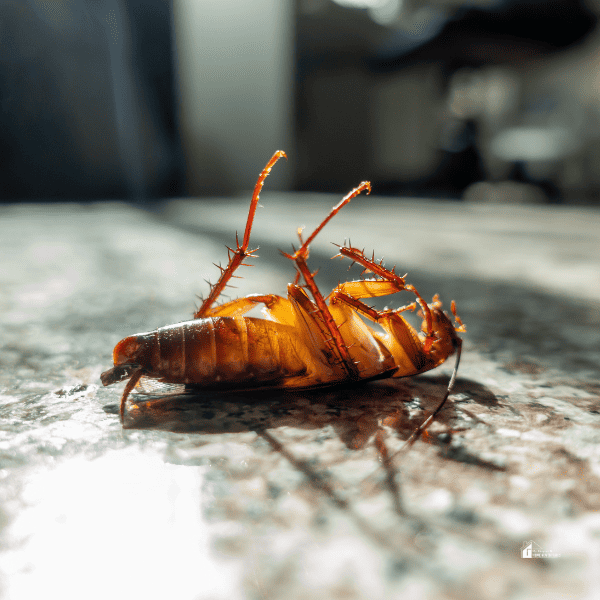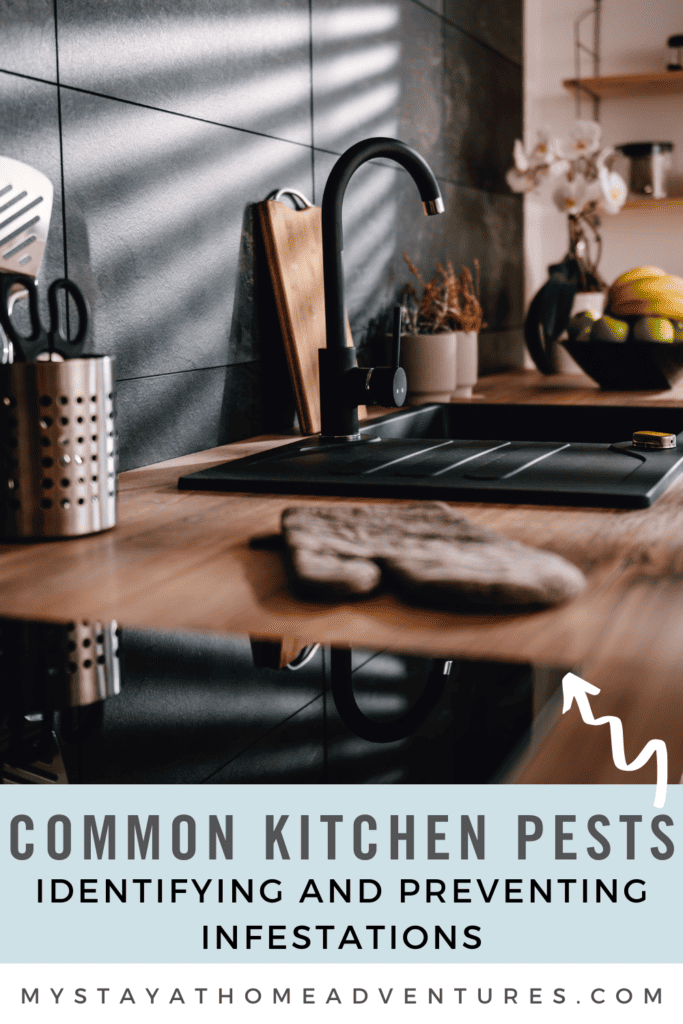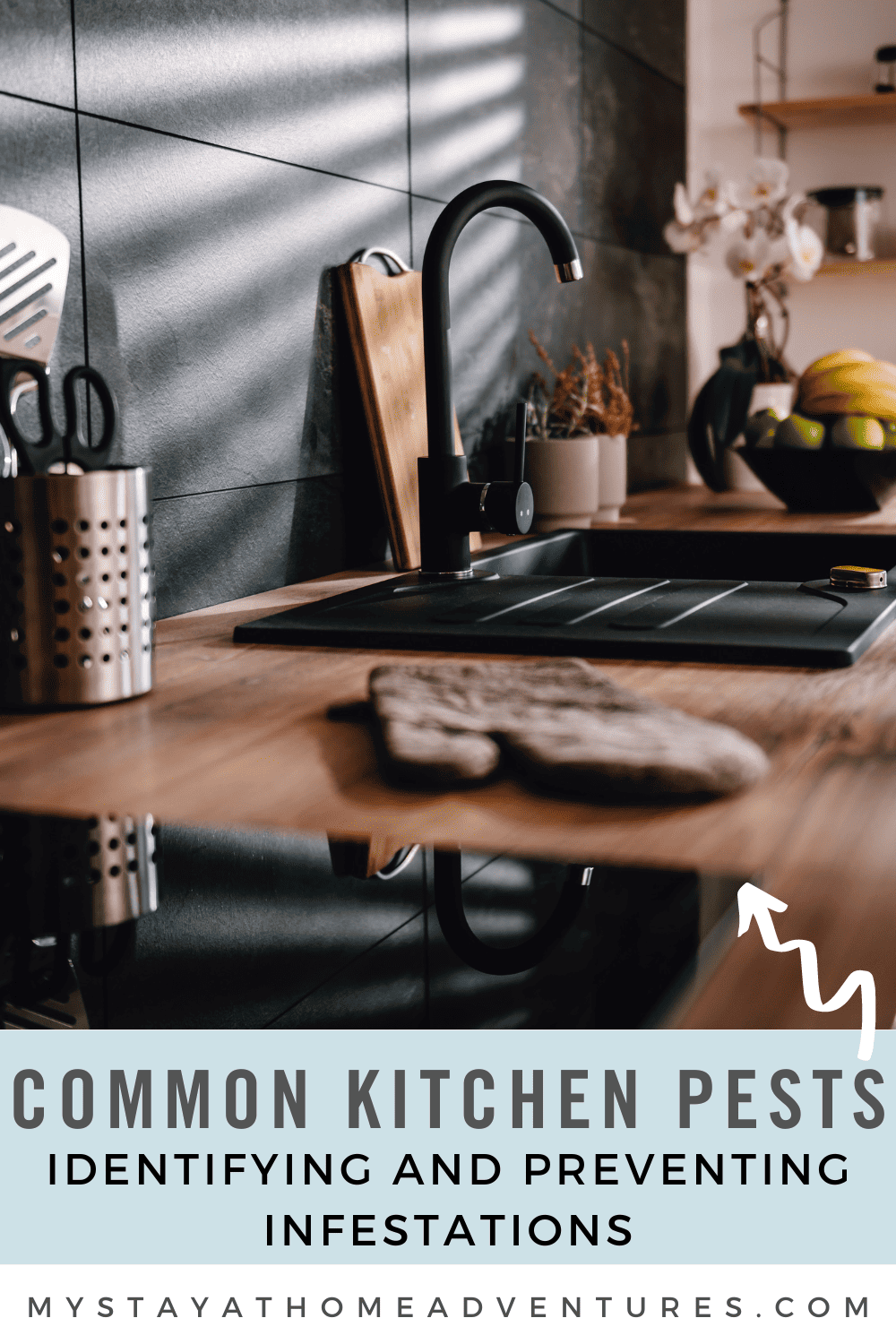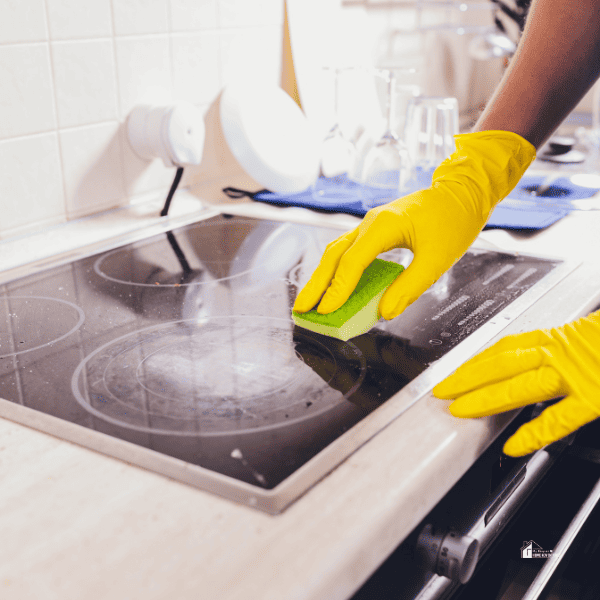Common Kitchen Pests: Identifying and Preventing Infestations
This post may contain affiliate links which might earn us money. Please read my Disclosure and Privacy policies hereThe kitchen, a hub for cooking and family gatherings, can unfortunately also attract a variety of pests. These unwanted guests can be more than just a nuisance; they can pose health risks and cause damage to your pantry goods and property. In this article, we will identify common kitchen pests, including weevils, and offer practical advice for preventing infestations.

Identifying Common Kitchen Pests
Weevils: These small beetles, often found in grains, can infest packages of flour, rice, and cereals. They are distinguished by their long snout and small, oval-shaped bodies.
Weevils typically enter homes in purchased food items and can rapidly reproduce, leading to a significant infestation in your pantry. There are several types, including rice and grain weevils, each preferring different food sources.
Fruit Flies: These tiny pests are attracted to ripe and fermenting fruits and vegetables. Fruit flies are small with distinctive red eyes and are commonly seen swarming around fruit bowls, garbage cans, and other areas where fermentable foods are found.
They breed quickly, with a lifecycle from egg to adult in just about a week, which can lead to rapid population growth.
Ants: These insects are one of the most common kitchen pests. They are particularly attracted to sweets, fats, and oils, and can be found in large numbers following scent trails they leave for other ants.
There are many species of ants, each with different preferences and behaviors, but all can be a nuisance once they find a food source in your kitchen.
Cockroaches: Known for their hardiness, cockroaches are attracted to food scraps, moisture, and even non-food items.
They can carry bacteria and pathogens, making them a significant health concern. Cockroaches are nocturnal and can go unnoticed for some time, so it's important to watch for signs like droppings or egg cases.
Moths (Pantry Moths): Pantry moths, such as the Indian meal moth, are attracted to grains, flours, nuts, and dried fruits.
They lay eggs in these food products, and their larvae feed on them, contaminating food. They can be identified by their reddish-brown color and the silken threads left by their larvae in infested food.

Signs of Infestation
Detecting a pest infestation early is crucial in preventing it from escalating into a more serious problem. There are several telltale signs that can indicate the presence of pests in your kitchen:
- Damaged Packaging: One of the first signs of an infestation is damage to food packaging. This can include small holes, tears, or gnaw marks on bags and boxes. Pests like weevils and moths can chew through paper and thin plastic to access food.
- Droppings: The presence of pest droppings is a clear indicator of an infestation. These droppings can vary in size and shape depending on the pest but are typically small and dark. In the case of larger pests like cockroaches, you might also find smear marks or shed skins.
- Live or Dead Insects: Seeing live or dead insects in your kitchen is a direct sign of an infestation. Common kitchen pests like fruit flies, ants, and cockroaches are often seen in areas where food is stored or waste is accumulated.
- Larvae or Eggs in Food Products: Finding larvae or eggs in your food products, especially in grains, nuts, and dried fruits, is a definite sign of a pest problem. These can be small and hard to see, so it’s important to inspect your food closely.
- Musty Odor: A musty or unpleasant odor in your pantry or kitchen cabinets can be a sign of an infestation. Certain pests, like moths and weevils, can leave behind a noticeable smell, especially when they are present in large numbers.
- Visible Webbing: Webbing in food containers is often a sign of moth infestations. This webbing can be found in flour, nuts, and other dry goods, and is created by the larvae of these pests as they feed.
- Unusual Pet Behavior: Sometimes, your pets can alert you to a pest problem before you notice it yourself. If your pet is sniffing or pawing at areas they usually ignore, it might be worth checking for signs of pests.
Regular inspections of your pantry and kitchen areas are crucial for early detection of any pest activity. If you do notice signs of an infestation, it’s important to act quickly to identify the pest involved and take appropriate measures to eradicate them.

Preventive Measures
Effective prevention of kitchen pests is a multifaceted approach that involves diligence and consistency. Here are some strategies to help keep your kitchen pest-free:
Proper Storage
The importance of using airtight containers for food storage cannot be overstated. This practice is crucial for keeping food fresh and, more importantly, for making it inaccessible to pests.
Invest in quality containers with tight-fitting lids to store grains, flours, nuts, cereals, and other pantry items. This barrier not only prevents pests from entering but also contains any infestations that may have originated from already infested items.
Regular Cleaning
A clean kitchen is a fundamental deterrent to pests. Regular cleaning of shelves, cupboards, and pantries is essential. Wipe down surfaces to remove crumbs and food residues, which can attract pests.
Pay special attention to corners and hidden areas where food particles can accumulate. Cleaning up spills immediately is also crucial, as even small amounts of food or liquids can attract a range of pests.
For those tougher infestations that household cleaning can't resolve, professional services such as Lakewood exterminating offer tailored solutions to ensure your kitchen remains a pest-free zone. Consulting with experts can provide peace of mind and prevent future invasions by addressing the problem at its source.
Dispose of Garbage Regularly
Efficient garbage management is key in preventing pest infestations. Ensure that your garbage can is always closed and dispose of waste regularly.
This practice is especially important for organic waste, which can attract fruit flies, cockroaches, and ants. Consider using a garbage can with a tight lid and empty it frequently to minimize the risk of attracting pests.
Inspect Groceries
Many pest infestations originate from items brought into the home. Inspect all grocery items, particularly grains, cereals, and dry goods, before storing them.
Look for any signs of pest activity, such as small holes in packaging, webbing, or live insects. If you suspect an item is infested, dispose of it immediately in a sealed bag to prevent the spread of pests to other foods.
While each step is effective on its own, combining these strategies will provide the best protection against common kitchen pests. Regular vigilance and maintenance are the keys to keeping your kitchen safe and pest-free.

Natural Remedies for Pest Control
Natural remedies can be effective in controlling minor pest infestations without the need for harsh chemicals.
For fruit flies, vinegar traps are highly effective. Simply fill a bowl with apple cider vinegar, cover it with plastic wrap, and poke small holes in the top – the flies are attracted to the vinegar and get trapped.
Bay leaves are a natural deterrent for weevils; placing these in your grain containers can help keep these pests at bay.
Essential oil sprays, made with oils like peppermint, lemon, or eucalyptus, can act as natural ant repellents. Spraying these oils around entry points and the perimeter of your kitchen can help keep ants away.
Additionally, diatomaceous earth can be used to safely control various pests like cockroaches and ants by dehydrating them upon contact.
When to Call a Professional
While home remedies can be effective for small infestations, there are times when professional help is needed.
If you notice a rapid increase in pest numbers, or if your efforts do not seem to be reducing the infestation, it's time to call in a professional exterminator.
They have the expertise and equipment to handle larger infestations more effectively and can provide long-term solutions to prevent future problems.
Maintaining a Pest-Free Kitchen
A proactive approach is key in maintaining a pest-free kitchen. Regular inspections of your pantry and kitchen areas are crucial for early detection of any pest activity.
Sealing entry points, such as cracks and holes in walls, floors, and around windows and doors, is essential in preventing pests from entering your home.
Controlling moisture is another important aspect, as many pests are attracted to damp environments. Fix any leaky faucets and pipes and ensure your kitchen has good ventilation.
Practicing good food hygiene is vital; clean up crumbs and spills promptly, store food in airtight containers, and avoid leaving dirty dishes in the sink overnight. Use homemade cleaning products.

Final Remarks
By being aware of the types of pests that can invade your kitchen, recognizing the early signs of an infestation, employing preventive measures, and using natural remedies when appropriate, you can effectively protect your home and family from common kitchen pests.
Regular cleaning, proper food storage, and addressing moisture issues are fundamental in ensuring a pest-free environment.
In cases where infestations become unmanageable, don't hesitate to seek professional help to ensure the health and safety of your household.







